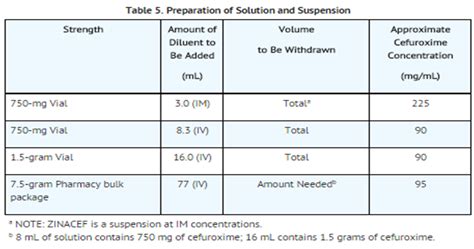Intro
Cefuroxime treats bacterial infections, offering benefits like effective antibiotic coverage, fast recovery, and reduced infection recurrence, with uses including pneumonia, skin, and urinary tract infection treatment.
Cefuroxime is a second-generation cephalosporin antibiotic that has been widely used to treat various bacterial infections. The importance of cefuroxime lies in its broad-spectrum activity, which means it can effectively combat a range of Gram-positive and Gram-negative bacteria. This makes it a valuable treatment option for patients suffering from infections such as pneumonia, skin infections, and urinary tract infections. With its ability to penetrate into tissues and fluids, cefuroxime can reach the site of infection and start working quickly to eliminate the bacteria.
The benefits of cefuroxime are numerous, and its effectiveness has been proven in numerous clinical trials. One of the key advantages of cefuroxime is its ability to treat infections caused by bacteria that are resistant to other antibiotics. This is particularly important in the era of antibiotic resistance, where finding effective treatments for bacterial infections is becoming increasingly challenging. Additionally, cefuroxime has a relatively low risk of side effects, making it a safe choice for patients who are prone to adverse reactions. With its ease of administration, either orally or intravenously, cefuroxime can be used to treat patients in various settings, from outpatient clinics to hospital wards.
Cefuroxime's mechanism of action involves inhibiting the synthesis of the bacterial cell wall, ultimately leading to the death of the bacterial cell. This makes it an effective treatment option for a range of bacterial infections, including those caused by Streptococcus pneumoniae, Haemophilus influenzae, and Escherichia coli. The versatility of cefuroxime also extends to its use in surgical prophylaxis, where it can be administered to prevent surgical site infections. With its broad-spectrum activity and low risk of side effects, cefuroxime is an essential antibiotic in the treatment of bacterial infections.
Cefuroxime Mechanism of Action

Cefuroxime Spectrum of Activity
The spectrum of activity of cefuroxime includes a range of Gram-positive and Gram-negative bacteria. This includes Streptococcus pneumoniae, Haemophilus influenzae, and Escherichia coli, among others. Cefuroxime is also effective against certain anaerobic bacteria, such as Bacteroides fragilis. The broad-spectrum activity of cefuroxime makes it a valuable treatment option for patients with complex infections, where the causative organism may not be immediately identified.Cefuroxime Uses

Cefuroxime Administration
Cefuroxime can be administered orally or intravenously, depending on the severity of the infection and the patient's condition. The oral form of cefuroxime is available in tablet or suspension form, while the intravenous form is available as a powder for reconstitution. The dosage of cefuroxime varies depending on the infection being treated, as well as the patient's age, weight, and renal function.Cefuroxime Benefits

Cefuroxime Side Effects
While cefuroxime is generally well-tolerated, it can cause side effects in some patients. Common side effects of cefuroxime include: * Diarrhea * Nausea and vomiting * Abdominal pain * Headache * RashCefuroxime Interactions

Cefuroxime Contraindications
Cefuroxime is contraindicated in patients with a history of hypersensitivity to cephalosporins or penicillins. It is also contraindicated in patients with severe renal impairment, as it can increase the risk of nephrotoxicity.Cefuroxime Dosage

Cefuroxime Overdose
In the event of an overdose, patients may experience symptoms such as nausea, vomiting, and diarrhea. In severe cases, patients may experience seizures, coma, and respiratory depression. Treatment of an overdose involves supportive care, such as hydration and monitoring of vital signs.Cefuroxime Pregnancy and Breastfeeding

Cefuroxime Storage and Handling
Cefuroxime should be stored in a cool, dry place, away from direct sunlight and moisture. The medication should be kept out of reach of children and pets, and it should be disposed of properly after expiration or use.What is cefuroxime used for?
+Cefuroxime is used to treat a range of bacterial infections, including pneumonia, skin infections, and urinary tract infections.
How does cefuroxime work?
+Cefuroxime works by inhibiting the synthesis of the bacterial cell wall, ultimately leading to the death of the bacterial cell.
What are the common side effects of cefuroxime?
+Common side effects of cefuroxime include diarrhea, nausea and vomiting, abdominal pain, headache, and rash.
Can cefuroxime be used during pregnancy?
+Cefuroxime is classified as a category B medication, which means that it is generally safe to use during pregnancy. However, it should be used with caution, as it can cross the placenta and potentially harm the fetus.
How should cefuroxime be stored?
+Cefuroxime should be stored in a cool, dry place, away from direct sunlight and moisture.
In summary, cefuroxime is a valuable antibiotic that offers a range of benefits, including broad-spectrum activity, low risk of side effects, and ease of administration. Its effectiveness in treating bacterial infections, including those caused by antibiotic-resistant bacteria, makes it an essential treatment option in the era of antibiotic resistance. We invite readers to share their experiences with cefuroxime, ask questions, or provide feedback on this article. By doing so, we can work together to promote the responsible use of antibiotics and improve patient outcomes.
